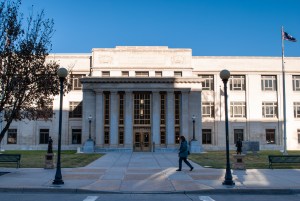

Most people haven’t seen their local or state judges in action, so how can they decide on election day whether to keep them on the bench?
All Wyoming judges — including Wyoming Supreme Court justices, district court judges and circuit court judges — are originally vetted and recommended by the state’s Judicial Nominating Commission. The governor then selects and appoints jurists from those nominations. Then during the first general election after appointment — and then every eight, six or four years after that, depending on which court they serve on — voters determine whether a judge or justice should be “retained,” i.e. keep their job.
If fewer than half of voters opt to retain a judge, they lose their seat.
Wyoming has used that nominate-appointment-and-retain system since the ‘70s when a national movement encouraged such policies to make the judiciary less political.
Retention elections happen during the first general election the year after the governor appoints a judge, and then again if a judge decides they want to keep serving after a term ends.
Supreme court justices’ terms last eight years, while district and chancery court judges’ terms are six years. Circuit court judges have four-year terms.
To prepare to make your judicial retention decisions at the polls, it’s helpful to find out in advance who will be on your ballot. You can get a sample ballot from your county clerk’s office, look it up on your local elections website or via vote.org.
Once you know who you need to evaluate, WyoFile’s Election Guide can link you to the Wyoming Bar Association’s performance assessment of each judge.
That assessment uses feedback from attorneys who’ve sat before each judge over the last few years, evaluating each judge’s knowledge of the law, impartiality and respectfulness, among other things.
For this election, the attorney surveys didn’t rate a single metric of any judge as inadequate. Instead, the compilation of responses ended up with all judges being deemed above adequate or adequate.
Those looking beyond attorney’s opinions may refer to the state’s Code of Judicial Conduct in deciding whether their judge has acted appropriately.
Some also take age and mental fitness into account. At the Wyoming Supreme Court level, justices must retire by the age of 70, but this rule doesn’t apply for other judges.
The outcome of retention elections could have far-reaching consequences across the state, ranging from broad topics like abortion to one individual’s life sentence.
The post Everything you need to know about ‘judicial retention’ on your Wyoming ballot appeared first on WyoFile .



